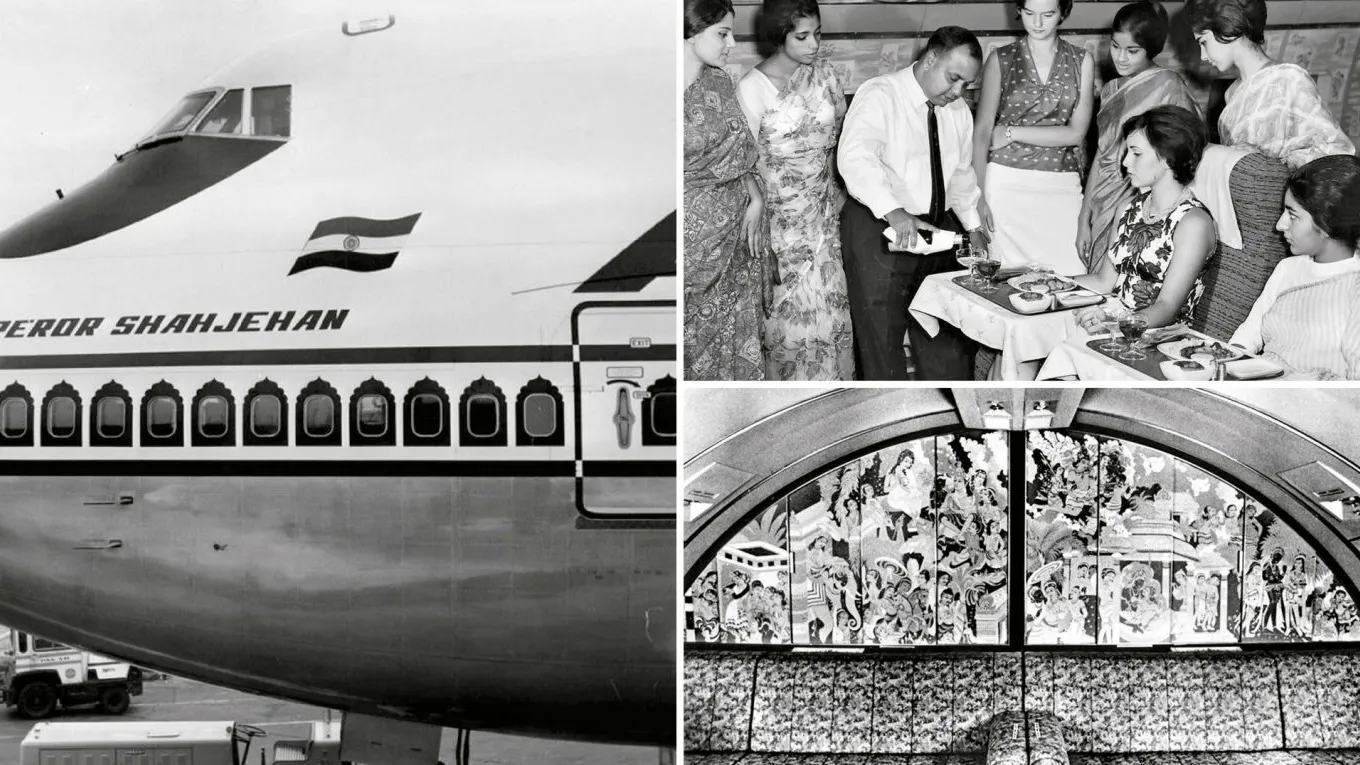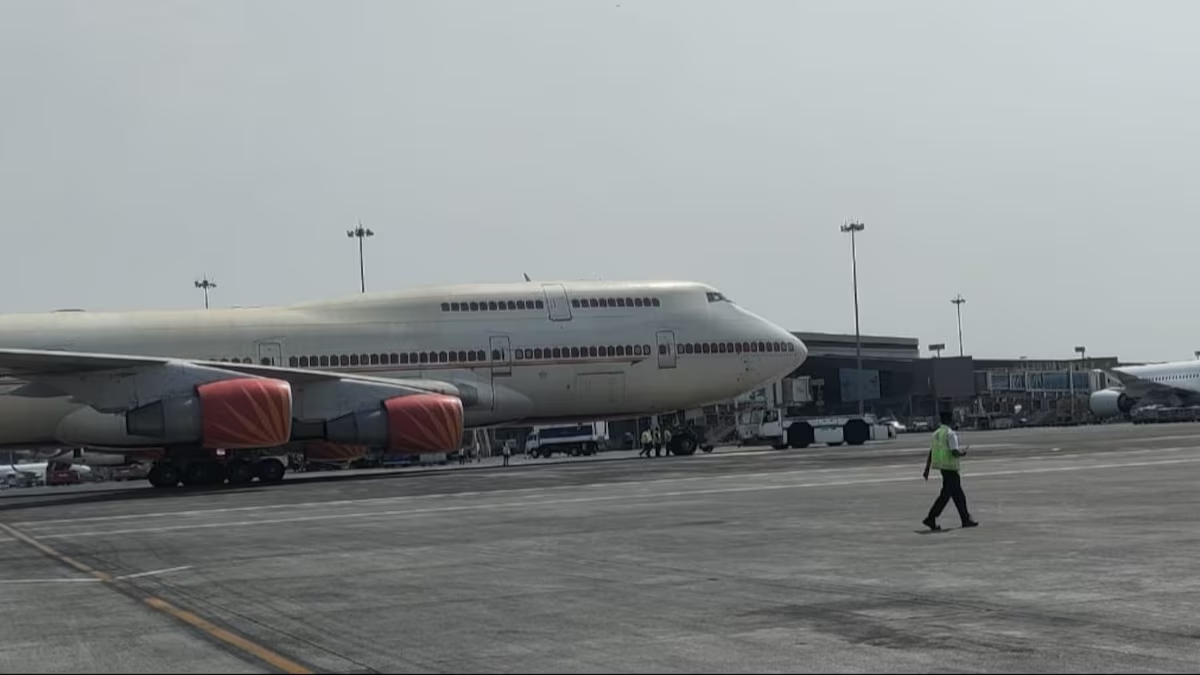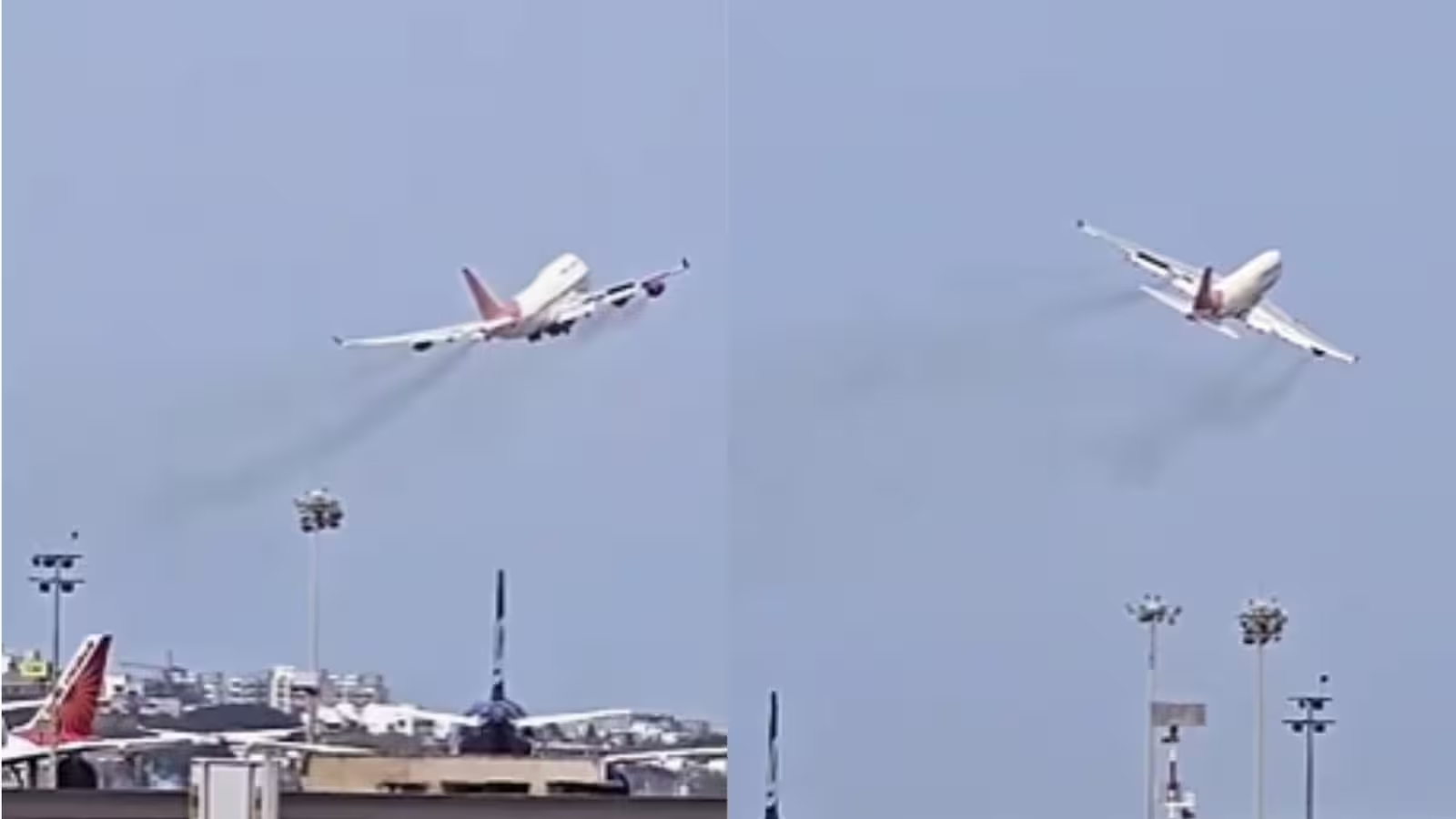Air India, a Tata Group-owned airline, bid farewell to its legendary Boeing 747 aircraft on Monday morning, ending an era that began with JRD Tata. This iconic aircraft, named 'Agra' and registered as VT-EVA, faithfully served the Tata-owned airline for nearly five decades, operating commercial, VVIP, and evacuation flights. The departure of the Boeing 747 marks a significant milestone for the airline, which commenced operations in 1932.

The Boeing 747 took its final flight from Mumbai airport before being dismantled in Plainfield, US, where it will be stripped for parts. In a poignant gesture, the pilots performed a traditional "Wing Wave," a customary maneuver for retiring aircraft. The iconic jumbo jet was sold to AerSale, a US-based supplier of aftermarket commercial jet engines and parts, marking the end of an illustrious chapter in aviation history. Last year, the fleet of Boeing 747-400 aircraft, including this one, was de-registered by the Director General of Civil Aviation (DGCA) upon retirement, and Air India subsequently removed the Maharaja crest and insignia.

History of Air India’s Boeing 747 Fleet
Air India's disposal of its Boeing 747 jets marked the end of a significant era in its history, under the leadership of Sir JRD Tata, a stalwart of Indian industry who mentored Ratan Tata, now Chairman Emeritus of the Tata Group. At its peak, Air India operated a fleet of 25 Boeing 747 jets, serving both as passenger carriers and VIP transports.
In recent times, Air India possessed only four of these historic jets, which were sold to AerSale, a US-based aftermarket commercial parts supplier. These aircraft will undergo dismantling, as their parts hold considerable value in the global market due to their cost-effectiveness. Notably, two of these jets are slated for conversion into freighters.
The de-commissioning process of the 747s was overseen by the Directorate General of Civil Aviation (DGCA) and they were re-registered under American regulatory standards with the file number N940AS. This temporary registration facilitated their final flight to the United States.

What is the Wing Wave Maneuver?
The wing wave maneuver involves a graceful side-to-side dip of the aircraft's fuselage and is recognized as a skilled and poignant tradition in aviation.
- Typically, the wing wave marks a pilot's farewell flight but is equally significant in an aircraft's life cycle.
- This maneuver symbolizes an aircraft's retirement.
- It is also used as a gesture of appreciation to airbase personnel.
- Cargo planes often perform the wing wave when departing from their home airports, acknowledging that they may never return to the place of their origin.
- The Boeing 747 played a pivotal role in several critical missions for Air India, including two medical evacuation flights to Wuhan, China, at the onset of the COVID-19 pandemic in 2020.

Air India's Boeing 747 Farewell: A Heartfelt Tribute
Air India recently bid farewell to its iconic Boeing 747 aircraft with a poignant 'wing wave' gesture during its departure from Mumbai airport. This emotional moment was captured in a video, reflecting the airline's nostalgic sentiments towards the beloved aircraft.
The Air India Boeing 747, known by the call sign VT EVA, concluded operations in 2021 and recently took its final flight with a temporary US registration, N940AS. As per aviation tradition, the aircraft performed a wing wave "goodbye" as it completed its journey to Plainfield, US, where it will be dismantled for parts.
Another Boeing 747 will soon depart for the US, and two other aircraft in the hangar will be stripped for spares, with the remaining shell sold to an aviation academy for inflight crew training, confirmed a senior Air India official.
The Pratt & Whitney JT9D engines of the Boeing 747 played a crucial role in long-haul Trans-Atlantic flights and served as Air India One for the President and Prime Minister during international tours.
Following its official retirement, the aircraft was deregistered from the Indian aviation register by the Directorate General of Civil Aviation (DGCA) last year. Subsequently, the aircraft's Air India livery was replaced with a temporary American registration, N940AS, enabling its departure from Mumbai. This poignant farewell flight soared over Santa Cruz, evoking a range of emotions among aviation enthusiasts and historians like Debasish Chakraverty.

End of an Era for the Boeing 747
Air India bid farewell to its iconic Boeing 747 after nearly fifty years of dedicated service in various roles, including commercial flights, VVIP transport, and evacuation missions. At Mumbai airport, airline staff gathered to witness the departure of this aviation legend, marked by the traditional 'wing wave' maneuver—an emotional symbol of the conclusion of an era.
Mumbai airport shared a video of this historic departure, capturing the final flight of the Boeing 747 from the airport. Spectators were left in awe by the "perfect goodbye wave" as the aircraft departed.
Boeing's decision to discontinue production of the legendary Boeing 747 in July 2020 signaled the end of a distinguished era spanning over fifty-two years, driven by changing market dynamics and evolving preferences. Throughout its operational history, Boeing manufactured a total of 1,574 B747s for numerous global carriers, including Air India. Facing financial challenges, Air India underwent acquisition by the Tata Group in January 2022.
Today, we wave goodbye to the first of our last 'Queen of the Skies', the B747, departing Mumbai.
Thank you for an era of majestic flights. We’ll miss your iconic presence.
Credits - @CSMIA_Official#AirIndia #b747 #QueenOfTheSkies pic.twitter.com/W3M15eo5Nx— Air India (@airindia) April 22, 2024
Legacy of the Aircraft
Dubbed the 'Maharaja of the Indian skies', the Boeing 747 left an indelible mark on Air India's legacy when it joined the fleet in October 1996. This iconic aircraft carried Indian dignitaries—presidents, vice presidents, prime ministers, and other VVIPs—across long-haul international routes, epitomizing luxury and comfort in aviation.
This moment was pivotal in Air India's history, having introduced its first Boeing 747 in 1971. The retirement of these majestic planes was confirmed in March 2021 after extensive service on domestic routes. Recently, Air India made headlines by selling its last four Boeing 747s, affectionately known as the 'Queen of the Skies', which had been synonymous with luxury and prestige while transporting Indian dignitaries for decades.
The final commercial flight of the Boeing 747 took place in March 2021 on a domestic route before its retirement from active duty. Since then, it has been stationed at Mumbai's Chhatrapati Shivaji Maharaj International Airport, awaiting its next journey.
Air India's decision to phase out its remaining Boeing 747s reflects a broader global aviation trend towards more efficient and modern aircraft. This shift underscores the industry's move towards newer, fuel-efficient jets.

Reflecting on the Boeing 747's Impact
Captain Rohit Bhasin, a seasoned pilot with extensive experience flying the Boeing 747, reminisced about the aircraft's enduring legacy. Describing it as "the queen in the sky," Captain Bhasin highlighted its remarkable achievements and lasting popularity in aviation history. During his tenure as a training captain for Air India's VVIP flights, Captain Bhasin cherished his 10-year journey with the Boeing 747.
The departure of Air India's last Boeing 747 from Delhi to Mumbai in March 2021 marked the end of an era, encapsulating the rich history and profound impact of this legendary aircraft on global aviation.
The privilege and joy of flying the Queen was unmatched. Hope she continues to soar with her new owners. Godspeed, my beloved Jumbo.. pic.twitter.com/PQBJ4d8GJ8— Ultra Long Ranger (@Aero_Sapien) April 22, 2024
Transition to a Sustainable Fleet Strategy and Recycling Efforts
Air India, now under the Tata group, plans to retire its aging fleet and replace it with fuel-efficient modern aircraft while salvaging recyclable parts from dismantled planes. Aviation expert Vipul Saxena noted that commercial aircraft have approximately 800 to 1,000 recyclable parts that can be repurposed for other aircraft, with metal parts sold as scrap.
Air India operated a total of 25 Boeing 747 aircraft, including nine B747-200Bs, two B747-300Ms, 13 B747-400s, and one B747-400M, serving its scheduled network and VVIP air transport needs from 1971 to 2001.
© Copyright 2024. All Rights Reserved Powered by Vygr Media.

























